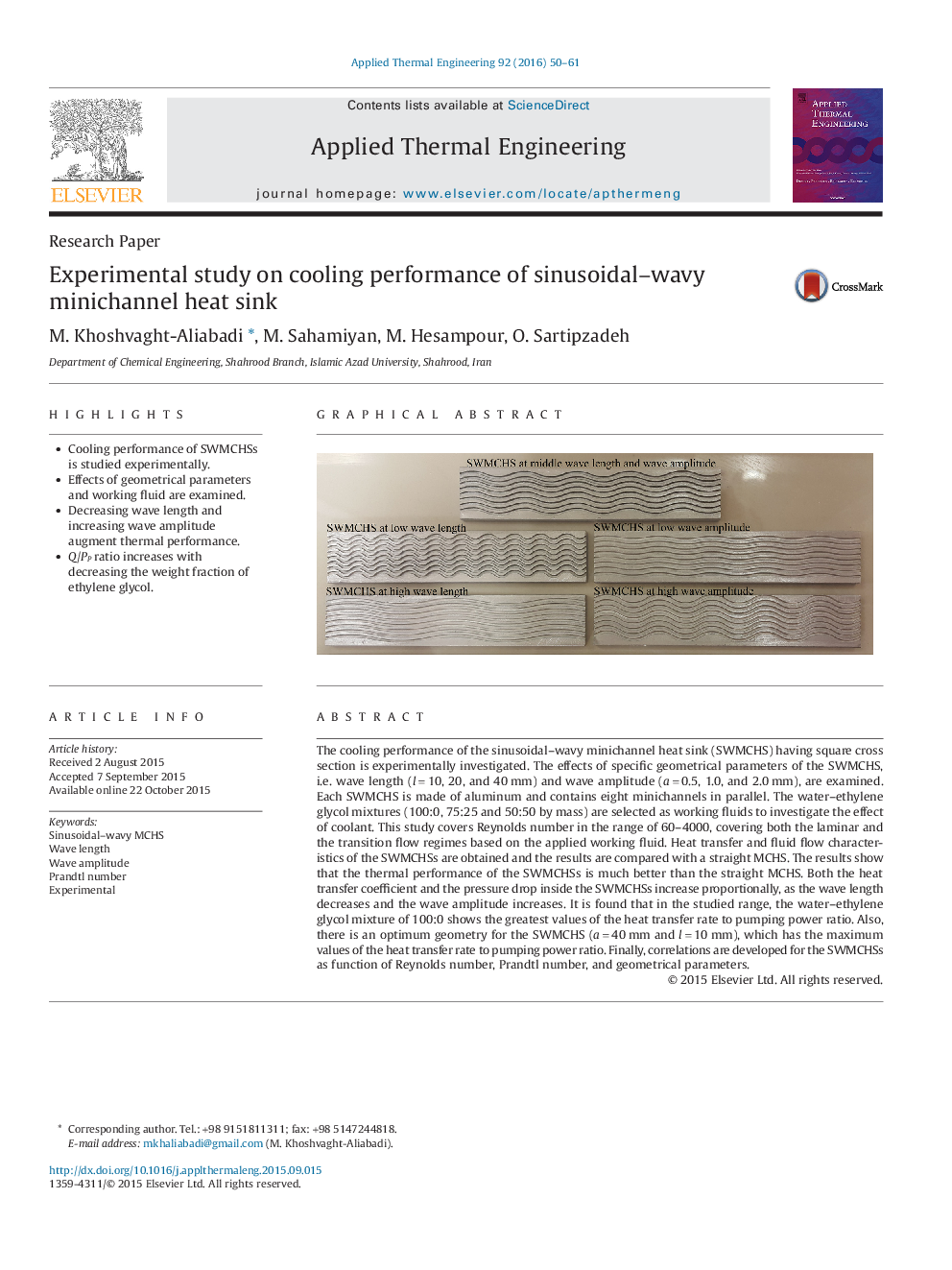| Article ID | Journal | Published Year | Pages | File Type |
|---|---|---|---|---|
| 645022 | Applied Thermal Engineering | 2016 | 12 Pages |
•Cooling performance of SWMCHSs is studied experimentally.•Effects of geometrical parameters and working fluid are examined.•Decreasing wave length and increasing wave amplitude augment thermal performance.•Q/PP ratio increases with decreasing the weight fraction of ethylene glycol.
The cooling performance of the sinusoidal–wavy minichannel heat sink (SWMCHS) having square cross section is experimentally investigated. The effects of specific geometrical parameters of the SWMCHS, i.e. wave length (l = 10, 20, and 40 mm) and wave amplitude (a = 0.5, 1.0, and 2.0 mm), are examined. Each SWMCHS is made of aluminum and contains eight minichannels in parallel. The water–ethylene glycol mixtures (100:0, 75:25 and 50:50 by mass) are selected as working fluids to investigate the effect of coolant. This study covers Reynolds number in the range of 60–4000, covering both the laminar and the transition flow regimes based on the applied working fluid. Heat transfer and fluid flow characteristics of the SWMCHSs are obtained and the results are compared with a straight MCHS. The results show that the thermal performance of the SWMCHSs is much better than the straight MCHS. Both the heat transfer coefficient and the pressure drop inside the SWMCHSs increase proportionally, as the wave length decreases and the wave amplitude increases. It is found that in the studied range, the water–ethylene glycol mixture of 100:0 shows the greatest values of the heat transfer rate to pumping power ratio. Also, there is an optimum geometry for the SWMCHS (a = 40 mm and l = 10 mm), which has the maximum values of the heat transfer rate to pumping power ratio. Finally, correlations are developed for the SWMCHSs as function of Reynolds number, Prandtl number, and geometrical parameters.
Graphical AbstractFigure optionsDownload full-size imageDownload as PowerPoint slide
